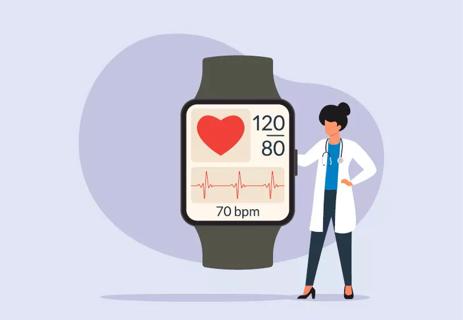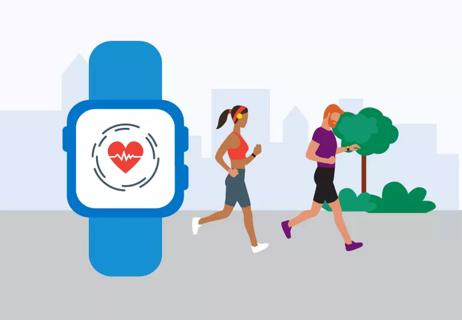How to play the numbers game — and win

How’s your heart pumping today? Admittedly, most people probably don’t know that answer off the top of their head.
Advertisement
Cleveland Clinic is a non-profit academic medical center. Advertising on our site helps support our mission. We do not endorse non-Cleveland Clinic products or services. Policy
But knowing — and effectively managing — your ejection fraction can make a big impact on the quality of your life and health. Keeping tabs on it not only helps your doctor treat you more effectively but also leads to better outcomes.
Cardiologist J. Emanuel Finet, MD, says it straight: “Low ejection fraction is directly proportional to survival. By improving it, you improve your survival outlook.”
Dr. Finet does the math on ejection fraction and gives seven ways to help you improve your heart’s pumping power.
The heart has two main muscular chambers: the left and the right ventricle. Each chamber has MVP status in the body, working together to perform jobs you literally couldn’t live without:
A heart at rest holds a certain amount of blood. Ejection fraction refers to the percentage of that blood your heart pumps out with each beat.
“Assuming a normal heart size and rate, when ejection fraction is normal, the heart is pumping a normal amount of blood,” Dr. Finet explains. “We can assume the blood is moving at a normal speed around the body.”
But a low ejection fraction spells trouble. “Low ejection fraction means the ventricle is not contracting sufficiently to pump enough blood out of the heart,” he says. “If the ejection fraction is abnormal, that person has some degree of heart failure.”
Advertisement
Doctors calculate your ejection fraction using imaging techniques such as an echocardiogram. They measure the result in percentages. Here’s a breakdown of the numbers:
Taking care of your ticker not only helps heart failure symptoms, but it may even improve your ejection fraction and overall survival. Here are some ways to do that:
1. Partner up with a doctor
Whether it’s a cardiologist or your primary care physician, talk to a doctor about your symptoms. Doctors have many ways to help manage heart failure. From medications to implantable cardioverter defibrillators, their heart failure toolkit is chock-full of effective options to improve your heart health.
2. Be a heart detective
Put this on your doctor’s to-do list, too. By identifying and treating the underlying causes of low ejection fraction, you take major steps toward improving your quality of life. For example, if hypothyroidism is part of the puzzle, doctors can work on managing your thyroid levels. Similarly, your blood pressure or diabetes may need attention, as well as other modifiable conditions.
3. Get moving
Is there anything exercise can’t help? Physical activity, in particular aerobic exercises, can help your heart meet your body’s demands. It’s a classic case of doing more with less.
“If the heart weakens and provides the body with less oxygenated blood, the body suffers,” Dr. Finet notes. “But if we help the body use that oxygen more efficiently, we may improve your overall condition even if we are unable to change your heart function.” Talk to your doctor about joining a cardiac rehabilitation program or about where to start if you want to do it on your own.
4. Watch your weight
“Losing weight won’t necessarily improve ejection fraction, but it can make you feel better,” Dr. Finet says. Tracking your weight will also help you and your doctor determine whether fluid is being built up due to the abnormal heart function.
Advertisement
5. Go on a salt strike
Consuming too much sodium, or salt, can have a domino effect:
“So sodium for heart failure patients is like poison,” explains Dr. Finet, who recommends keeping salt consumption to no more than 1,500 to 2,000 milligrams per day. (A 1.5-ounce bag of potato chips is around 255 mg.)
6. Just say no
Eliminate substances that can cause more damage to your heart, such as alcohol, cocaine, amphetamines and cigarettes. These vices can tank your ejection fraction and worsen your symptoms.
7. Say goodbye to stress
Stress can raise your heart rate and blood pressure, which are heart failure no-nos. “Less stress can help patients improve their heart condition and help them feel better.”
Advertisement
Advertisement
Learn more about our editorial process.
Advertisement

Your pulse and heart rate measure different body processes, but in most cases, they’re the same number

Deep breathing, yoga and meditation are just some ways to bring your heart rate down right away

Lifestyle changes can help strengthen your heart so it doesn’t have to work as hard when your body is at rest

A resting heart rate below 35–40 beats per minute or over 100 beats per minute may be cause for concern

Your heart rate naturally slows down while you sleep, but lower numbers aren’t always concerning

Both are related to your cardiovascular system, and both can impact the other

60 to 100 beats per minute is ‘normal,’ but you can still be healthy outside that range

Bradycardia, or a low heart rate, is more likely as you age — and could be a sign of health issues

Babies can get congested easily, but you can calm their cough by keeping them hydrated, using nasal drops and running a humidifier

Weight loss may cause loose, sagging skin and muscle loss to your rear

Several conditions, like vitiligo and fungal infection, can cause a loss of pigmentation, leading to white spots or patches on your skin